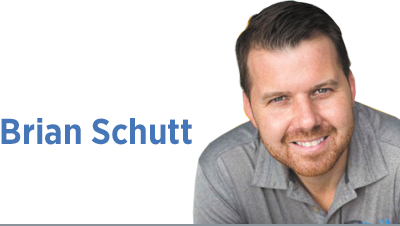 In the process of developing an entrepreneurial support system at Refinery46, I’ve engaged with hundreds of founders. And while something as complex as startups doesn’t have a formula for success, there’s almost always one consistent factor at play. Nearly all entrepreneurs who develop the roots for long-term success have a supportive relational network that encourages, connects and adds accountability in that critical time of early germination.
In the process of developing an entrepreneurial support system at Refinery46, I’ve engaged with hundreds of founders. And while something as complex as startups doesn’t have a formula for success, there’s almost always one consistent factor at play. Nearly all entrepreneurs who develop the roots for long-term success have a supportive relational network that encourages, connects and adds accountability in that critical time of early germination.
Most founders have the DNA to become business successes, yet, according to the U.S. Bureau of Labor Statistics, around 50% fail within five years. My contention is that the structure around a founder—the relationships and support he or she receives—can make or break the longevity of an enterprise.
One way sociologists define this idea is the term social capital. Robert Putnam described it this way in his book “Bowling Alone”: “The core idea of social capital theory is that social networks have value. … Just as a screwdriver (physical capital) or a college education (“human capital”) can increase productivity, so too social contacts affect the productivity of individuals and groups. … Societal quality is highest if a tightly knit network of reciprocal social relationships exists.”
The correlation between social capital and upward social mobility is strong, and on the latter, Indianapolis has a problem. In a 2014 study led by Harvard economist Raj Chetty, “Where is the land of Opportunity? The Geography of Intergenerational Mobility in the United States,” Indianapolis ranked 47th out of 50 of the largest cities in terms of intergenerational social mobility. Adding to that, the 2018 Social Capital Project coming out of the U.S. Senate’s Joint Economic Committee has Marion County 9,952 out of 9,992 counties in its social capital index.
That Indiana’s most populous and economically diverse city has the biggest challenge with upward mobility is not a surprise. But it prompts the question: What have other large cities at the higher end of the scale done to achieve greater mobility and higher dispensation of social capital?
In the Chetty study, Salt Lake City ranked near the highest, with 10.8% of residents moving from poorest to richest quintile. Some of the predictors, according to Chetty, are segregation (the more segregated, the less social mobility), family structure and better schools. He went on to frame social capital through the question, “Will someone help you out even if you’re not doing well?”
Social capital that is accumulated but not invested builds no community value. Brookings Institution’s Richard Reeves calls these people “dream hoarders”—those who build barriers to opportunity that make it harder for others to rise up to the top rung. While Reeves recommends a series of policy prescriptions, my preference is more ground-up.
The imaginative leap I want to encourage is for Indy to become a hotbed of “social venture capitalism”—a “Silicon Valley for Social VC”. Like financial venture capitalists, who make bets on ideas that can disrupt industries, social VCs can make wagers that their time and connections will disrupt cycles of limited opportunity. Belief in a person and the corresponding social VC investment could be the structure that nurtures a business to growth and allows for a new pathway of upward mobility.
Unlike financial VCs, investing social capital has a low barrier to entry. What it requires is a mindful effort to invest time and connections into someone who might provide little ROI today. Underlying this investment is a mindset of abundance over scarcity and a belief that, through sacrifice, shared victories are possible.•
__________
Schutt is the co-founder of Homesense Heating & Cooling and Refinery46 and an lecturer at Purdue University. Send comments to ibjedit@ibj.com.
Click here for more Forefront columns.
Credit: Source link


Comments are closed.